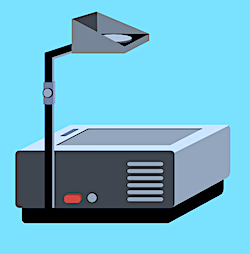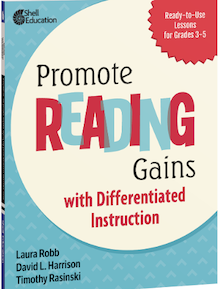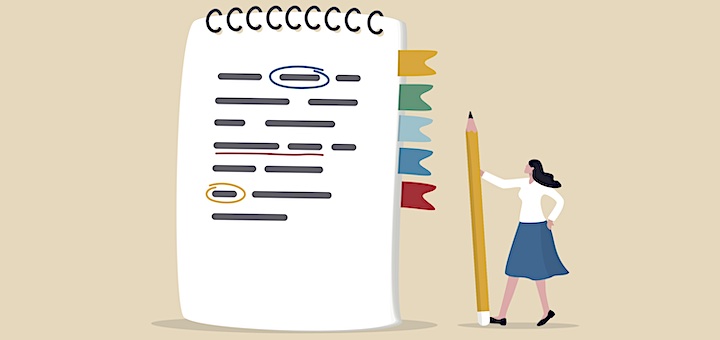How Teacher Notebooks Can Help Students Learn
Dr. Laura Robb is widely recognized as one of the nation’s leading experts on methods to effectively teach reading and literacy. Her practical approaches and expertise with middle grades students shine through in this master-class article on using teacher notebooks.
By Laura Robb

Choose a short story that you read this semester. In your readers’ notebook, identify the protagonist, their big problem, and actions taken to resolve the problem. If they didn’t resolve the problem, use text evidence to explain why.
Hands shot up! Questions peppered the room. Do we need to make a plan? How long should it be? When is it due? What if there’s more than one problem? Will you grade it? Will grammar and spelling count? Do we write in pencil or pen?
When students receive an assignment and don’t have a mental model of what the process is like, they raise myriad questions in order to clarify our expectations before digging into the task.
So let’s back up. If Ms. Gillman had shown the class how she responded to the prompt in her teacher’s notebook, using her recent read-aloud of “To Build a Fire” by Jack London, she would have constructed a mental model of the process for her students by showing that she:
► Did her thinking and took notes before writing.
► Included the story’s title and author in her lead or opening sentence.
► Used text details to cite actions taken.
► Explained why the protagonist didn’t resolve the problem.
► Indicated there would be comments but no grade.
In addition, Ms. Gillman posted a due date on the white board and told students they would have time to work on this response during class when she and their peers could support them and answer questions. Since this was first draft notebook writing, students should use pencil.
Now that expectations were clear to students, there weren’t any questions.
Teacher’s notebooks are powerful teaching tools that make your process and thinking visible. The hurdle you’ll have to overcome is the discomfort you might feel cold writing in front of students. That includes pausing to find text evidence, crossing out ideas, adding words and phrases, moving sentences, and showing students that first draft thinking and writing can be messy.
Let’s think through the value of teacher’s notebooks, some ways to get started, and also consider how they relate to student notebooks.
The Teacher’s Notebook: A Teaching Tool and Reading Resource
Use your teacher’s notebook to model how to set up and organize a notebook page as well as how to craft a range of responses to reading. For example, students who have done little authentic writing and used worksheets might not know how to organize a double entry, question/answer, or compare/contrast response.
In addition, your daily read-aloud texts and teacher’s notebook are the tools you’ll use again and again to build students’ mental model of how to apply a reading strategy, find themes and main ideas, understand why characters change, and how to take notes and transform them into an analytical paragraph or essay
If you have a document camera, place your notebook under it and “cold write” in front of students, projecting your process onto a whiteboard. Otherwise, you can write on your computer and post the “cold write” onto a whiteboard You might even write on a pen tablet using a smart board. You’ll have opportunities to cross out, rewrite, or eliminate ideas (Crowder 2020; Robb 2022).
Before you ask students to complete a response, post a similar response from your notebook on a whiteboard as a memory refresher. During class, keep your notebook on your desk, so students can review entries you’ve modeled before they complete their own responses. Though not exhaustive, the list that follows shows the kind of modeling you can do in your notebook.
► Summarizing fiction and nonfiction.
► Writing quick responses to reading such as lists of words that describe a character, words that reveal emotional responses, explaining why events connect, and questions the text raises.

► Using context to explain vocabulary.
► Showing how characters change from the beginning to the end of a story.
► Noting themes in a novel and informational text.
► Identifying main ideas.
► Following a character or person and commenting on their decisions, reactions, interactions, inner thoughts, conflicts, etc.
► Planning an analytical paragraph and essay.
When students have a mental model of your expectations and process, most will write notebook responses to their reading that build on the thought and care you put into your “cold write” modeling.
Students’ Notebooks: A Record of Their Reading Journey and Comprehension
My hope is that students will view readers’ notebooks as a diary of their personal reading journey and record of their feelings, thoughts, and reflections about the reading they do throughout the year (Crowder 2020; Robb, Harrison, & Rasinski 2023). In addition to the notebook writing you model, here are additional entries that you can model and students can try:
► Words that spring to mind after listening to a read aloud or reading a passage from their books.
► Reasons why they do or don’t connect to a specific character or person.
► Emotions the text raises within them and why they think they feel that way.
► Reasons why a book bores them or compels them to read.
► Lists of books they would like to read.
► Notes that document the highlights of group discussions.
► A quote that spoke to them and why.
► A drawing of part of the text and why they chose to illustrate it.
► Words and phrases that speak to students as writers.
► An explanation of why they are abandoning a book.
Students are creative and inventive, and they will find ways to respond that move beyond the above list.
Some Suggested Notebook Do’s and Don’ts
If you want students to write with depth and honesty, reflect on these suggestions:
► Don’t mark up students’ notebooks by correcting punctuation and grammar.
► Do keep a list in the back of your notebook of these kinds of errors and transform them into mini-lessons you present to small groups or the entire class.
► Don’t grade notebook entries.
► Do read some entries and respond by:
• Writing on a sticky note, a few positives and the students’ progress.
• Reading some entries to figure out how you can help students improve and schedule a conference to listen, model, and invite them to practice in front of you.
.• Inviting students to complete a specific entry on separate paper and tell them you will grade this work. Make sure they’ve had enough practice before you do this.
► Don’t grade paragraphs students have written in their notebooks.
► Do invite students to use notebook entries to develop a thesis statement or a position sentence, take notes, and draft an analytical paragraph or essay.
Reading every entry students write is an impossible task and one that won’t necessarily support your teaching and students’ learning. Instead, circulate as students write in their notebooks, read entries, answer questions, and offer on-the-spot support.
If you want to grade a specific type of entry that students have practiced, ask them to complete it on separate paper. On a sticky note write the grade along with positive statements that notice what students did well and then pose one or two questions that motivate students to think about improving their response. Besides inviting students to share entries with a partner or small group, you can discuss their notebook responses during a conference.
Notebook Takeaways
When you ”cold write” specific notebook responses to reading, you are staging a powerful learning experience – providing both your expectations and a resource that can strengthen their literacy skills.
The research of Graham and Hebert (2010) shows that when students write about books they can read, their comprehension improves. By adding writing about reading to your curriculum, you can improve students’ ability to organize their ideas into a variety of responses and at the same time develop their analytical and critical thinking,
References
Crowder, S. Travis (2020). Reflective Readers: The Power of Reader’s Notebooks. New Rochelle, NY: Benchmark Education, Company.
Graham, Steven & Hebert, Michael (2010). Writing to Read: Evidence for How Writing Can Improve Reading. New York, NY: Carnegie Corporation and Alliance for Excellent Education.
Robb, Laura (2022). Increase Reading Volume: Practical Strategies That Boost Students’ Achievement and Passion for Reading. Champaign, IL: NCTE.
Robb, Laura, Harrison, David L. & Timothy Rasinski (2023). Promote Reading Gains With Differentiated Instruction. Huntington Beach, CA: Shell Education.

Laura’s most recent book is Promote Reading Gains with Differentiated Instruction: Ready-to-Use Lessons for Grades 3-5 (Shell Education, 2023) written with Tim Rasinski and David Harrison. Her Increase Reading Volume: Practical Strategies That Boost Students’ Achievement and Passion for Reading (NCTE, 2022) is reviewed here at MiddleWeb.



































Wish this had been available when I was teaching. Good information and tools to have. I enjoyed reading through this.